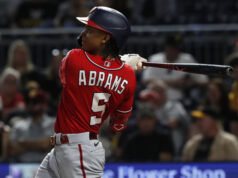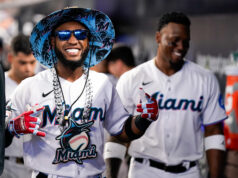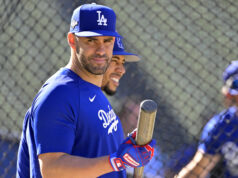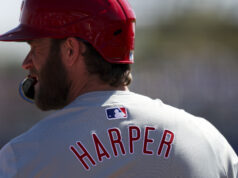The NHL is seeing diminishing numbers in fighting every year. It seems that players are not just fighters anymore; these players have to have some skill.
By Jay Travers
 This season, the NHL saw John Scott go to the All-Star game. At first glance you might think that it was a mistake.
This season, the NHL saw John Scott go to the All-Star game. At first glance you might think that it was a mistake.
“John Scott is not an All Star,” many fans had said, for they know the kind of role Scott plays.
He is an enforcer, a player who will fight the opposing team in order to send a clear message. A message that is very transparent among enforcers: Do not ever mess with my teammates, especially those who make the most money.
The role of the enforcer can be traced all the way back to the grass roots of hockey.
The Philadelphia Flyers of the 1970s were the front runners for big hits and using fighting as a tactic to intimidate.
Dave “The Hammer” Schultz is a perfect example. Big hits, game-changing fights, and the intimidation factor put the Flyers on the top of the world in the 70s, winning two Stanley Cups in (’74, ’75).
But the game has changed dramatically. Today’s game is all about goals and flashy moves. Not many teams use fighting as their main tactic.
So the question must be asked: Is there still room for fighting in the game of hockey?
The short answer is this: There will always be a spot for fighting in the game. The league cannot totally ban it, as it gives the fans something more to cheer about.
It also serves as a vehicle for retribution. The thought of an enforcer targeting a player stops much of the nonsense that would take place.
On the other hand, while many believe there may be a place for fighting, the momentum of the anti-fighting sentiment has grown strong.
As much some love a good fight, there are medical issues that cannot be ignored.
Look at the case of enforcer Derek Boogaard, who died due to a drug overdose.
Like John Scott, Boogaard fought his way into the NHL. He was known for his size and physicality, not his skill.
Always being the biggest kid in his grade, Boogaard was picked on throughout high school and during his time in the WHL.
But it was the Minnesota Wild who first gave Boogaard a chance. Minny drafted him in the seventh round, 202 overall, in the 2001 NHL draft. They saw something that not many people did, but players around the NHL would soon understand why the Wild drafted him.
NEXT: New York Rangers Kiss Philly Goodbye
Boogaard was feared by players because of his physical style.
Fighting was a common occurance for the enforcer; he even broke Todd Fedoruk‘s cheek in a fight. However, the countless blows to the head, concussions, bruised hands, and a few broken jaws led to “The Boogeyman’s” down fall.
The result was irreversible brain damage that would cause mood swings and depression.
To numb the pain, Boogaard took highly addictive pain killers and even turned to rehab several times.
Boogaard’s sad death opened the eyes of many spectators.
When asked if he thought the role of the enforcer was gone, John Scott had said yes, and that, “there aren’t many players who will play only two minutes a game.”
With the thought of Boogaard in mind, having fighting in the game is a tough choice. It gives the players the added benefit of safety and protection.
The fans eat it up. But player injuries are common not just physically, but mentally as well.
Take Sunday’s Rangers/Flyers game for instance.
As a result of Flyers’ forward Wayne Simmond’s sucker punch to Rangers’ captain Ryan McDonagh, Dylan McIlrath and Simmonds went and dropped the gloves. McIlrath had given the fans what they wanted, and Tanner Glass fought right after it to fuel the fire.
The Blueshirts won 3-1.
The energy a fight can provide is something unmatched. Even Marc Staal had told MSG Network that Madison Square Garden was going crazy after the fights.
Is it a coincidence? I don’t think so.
The Rangers controlled most of the game. They also hit a lot as well, keeping the Flyers at bay.
The rough style of hockey may not be the prettiest, but it can get the job done if there is a good balance between tougher players and scorers.
To quote Warren Zevon’s “Hit Somebody (The Hockey Song)”,
“There’s always room on our team for a goon. Son, we’ve always got room for a goon.”
Fighting is not the most beautiful part of hockey. It can often be taken out of context, as it is widely viewed as just personal retribution. But the players that do fight are often the same players who are widely respected across the League.
Players like NHL All-Star MVP, John Scott.













